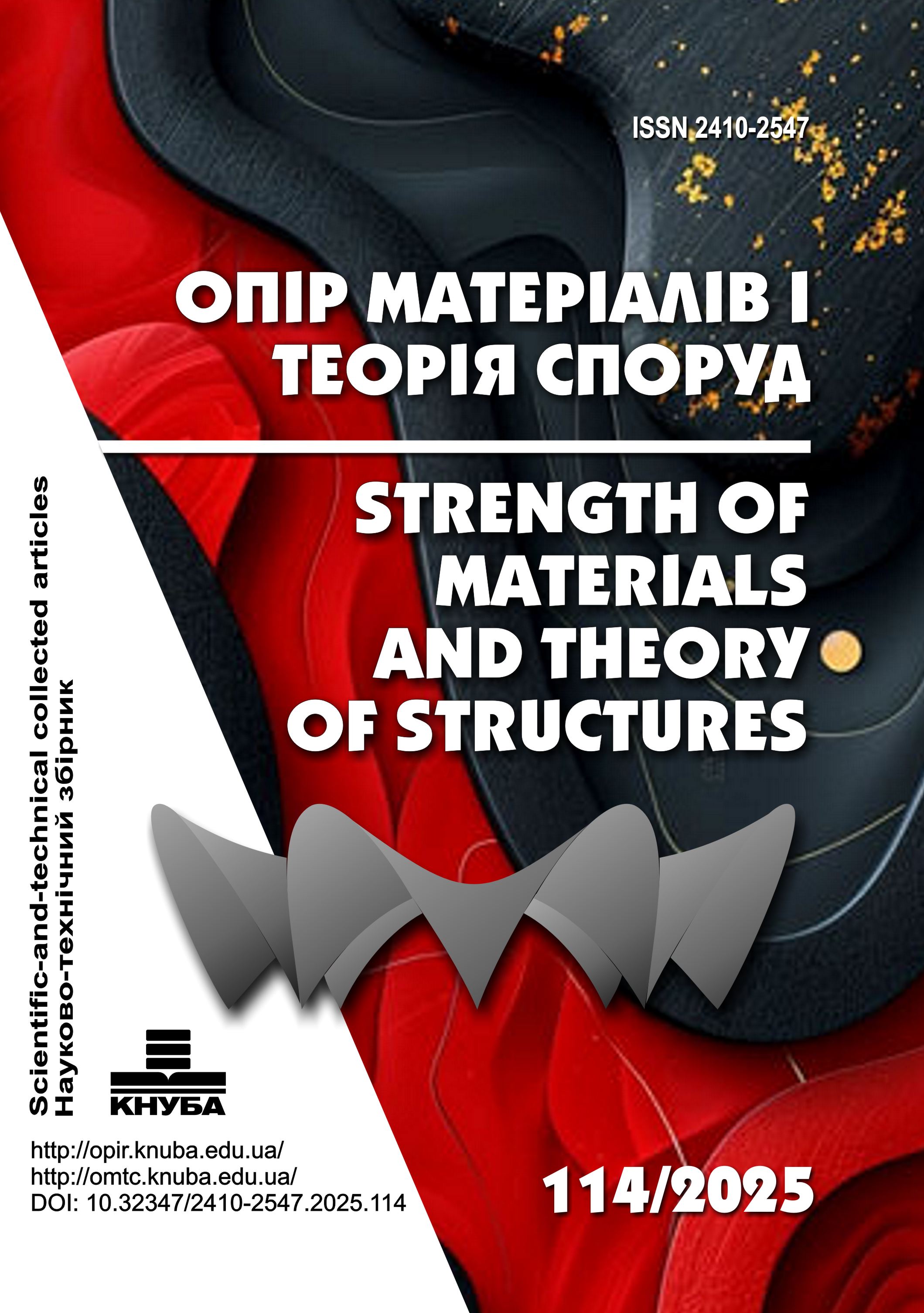The Newest Method for Optimizing Clusters of Special-Purpose Structures through BIM Modeling
DOI:
https://doi.org/10.32347/2410-2547.2025.114.319-327Keywords:
special-purpose facilities and structures, cluster geometric modeling, neural networksAbstract
A method of cluster geometric modeling is proposed and the results of this method application were considered to optimize resources when solving defense issues. An example of the necessary solution to the problem of reforming the placement of special-purpose facilities and structures in the light of the new concept of Ukrainian defense has been chosen, and on this basis an algorithm for quantitative and qualitative solution of the problem has been developed using modern neural networks.The article proposes a general method of cluster geometric modeling in resource optimization, which will be an urgent need to solve the problems facing Ukraine. For the effective formation and functioning of the Armed Forces of Ukraine and their development, it is necessary to maintain their material and technical support at a high level, which must meet modern requirements and world standards. The current relevance of the problem indicates an urgent need to study the problems of norming and standardization and the creation of territorial planning and urban planning solutions for property defense complexes under the conditions of the transition to a new concept of defense construction in Ukraine, close to world standards.
The purpose of the study is to create a toolkit to optimize the solution of problems that will arise in the process of developing the concept of complex modeling of the characteristics of special-purpose structures and related issues of territorial planning and urban development solutions.According to the authors, currently, complex, mainly anthropological, expert methods are mostly used when planning resources. Creating mathematical models requires a lot of time, which is unacceptable under current conditions, but if an already developed algorithm is used, which will be operated by a modern neural network, this drawback can be eliminated.The topic of decision optimization is currently a poorly structured multi-criteria problem. In addition, the existing correlations between influencing factors require the development of a complex apparatus for making urgent decisions.
References
Olawumi T.O. and Chan D.W.M. and Wong J.K.W. 2017. Evolution in the intellectual structure of BIM (Taylor and Francis Ltd.), 1060–1081
Ashworth S. and Druhmann C., and Streeter T., 2020. The benefits of building information modelling (BIM) to facility management (accessed).
Succar B. and Poirier E. 2020. Lifecycle information transformation and exchange for delivering and managing digital and physical assets (Automation in Construction, vol 112).
Tovbych V. 1986. Interactive graphic modeling of architectural environment taking into account features of its visual perception (Kyiv National University of Construction and Architecture the dissertation)
Myronenko V. 1999. Methodological bases of optimization of the architectural environment" Author's abstract. dissertation of doctor of architecture (Kharkiv State Technical University of Construction and Architecture)
Azgaldov G. and Kostin A. 2020. Quality - as the most important object of quantitative analysis, (Barcelona, Jan. 2012. Accessed)
Azgaldov G. 1996. Construction of a tree of indicators of properties of object (Standards and quality, Vol.11)
Lavryk G. 2020. Fundamentals of systems analysis in architectural research and design (Kyiv, 2002, p.140)
Panova L. 2010. Systematics of the architectural environment: monograph, (Kharkiv, p.235)
Badyul M. and Kramarenko V. 2013. Application of the method of analysis of hierarchies in design and construction" (Construction. Materials science. Mechanical engineering. Series: Energy, ecology, computer technology in construction, vol.70)
Motalo A and Stadnyk B and Motalo C 2020 Analysis of methods and types of measurements in qualimetry (Scientific journals and conferences, ISTCMTM Vol 78)
Sandbook (Base Camp Standards) Base Camp Facilities Standards 2004 (PDF Free Download)
Kysil O. and Levchenko O. 2018. Software tools for вім analysis and neural networks of artificial intelligence on its basis (Academia.edu, Collective monograph. Vol.2),
Kysil O. 2020. Systematisation of BIM data for project quality management (International Scientific Conference Topical issues of modern design)
Mykhalchenko S. 2016. Cluster approach to the formation and development of special areas in terms of approximation to the standards of developed countries (Urban Planning and Spatial Planning. Vol. 59, p.336)
Yablonska G. 2013. Economic efficiency and quality of urban and architectural solutions (Kyiv, Kyiv National University of Construction and Architecture, p.120)
Knysh V. and Yablonska G. 2017. Methodical improvement of design as a strategic and tactical means of materializing architecture (Urban Planning and Spatial Planning, vol 65)
Prusov D.E., et al. 2024. Methodological basis of BIM-analysis of damage and assessment of impacts, consequences, resources for restoration of buildings and structures (Strength of Materials and the Theory of Structures. Issue 112, 302-315).
Mykytas M.V. 2019. Methodology of system geometric modeling of adaptive building clusters of energy efficiency (Dissertation for the degree of Doctor of Technical Sciences).
Downloads
Published
Issue
Section
License

This work is licensed under a Creative Commons Attribution 4.0 International License.
Authors retain copyright and grant the journal right of first publication with the work simultaneously licensed under a Creative Commons Attribution License that allows others to share the work with an acknowledgement of the work's authorship and initial publication in this journal.

